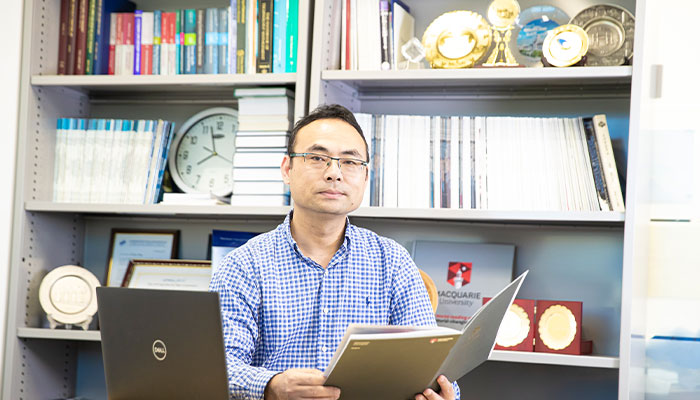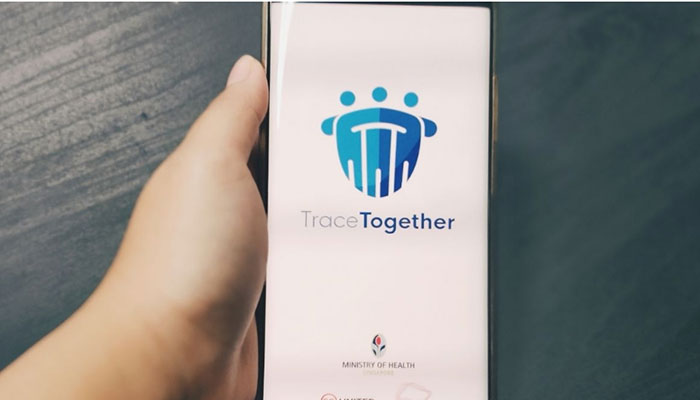Recent global events have shown that something that spreads even faster than a pandemic, is false information on the internet.

Lie detector: The project will develop techniques to improve the reliability of information that people access online.
“Finding ways to identify valid information among the misinformation on the internet is widely thought to be a grand challenge for the next decade,” says Professor Michael Sheng, who heads the Department of Computing at Macquarie University.
He is leading an ARC (Australian Research Council) Discovery research project at Macquarie University, with partners in Austria, China and the USA, that will develop innovative techniques to find truthful information amid the inherently unreliable web environment.
The project will develop new techniques and algorithms that can be used behind the scenes on the web, so that search engines and other internet services can improve the reliability of the information that people access.
“We will be creating novel algorithms based on machine learning and data mining techniques,” says Sheng.
Cow urine and other COVID-19 myths
The need to identify false material online has become even more apparent in the past six months, as people search for explanations and advice around COVID-19 and its impacts.
“The spread of misinformation during the pandemic has ranged from conspiracy theories around its cause, to false advice about eating garlic, drinking cow urine or even consuming poisonous bleach to prevent or treat the virus,” says Sheng
“This kind of information can be very harmful, so a system that allows us to quickly separate factual truth from fiction is critical and has the potential to support many important applications that safeguard Australian people and economy – such as emergency and disaster management and online healthcare.”
We expect our project to bring a technological breakthrough in truth discovery and contribute to the improvement of the trustworthiness of online information.
As fake news and doctored or misleading narratives online reach an all-time high, it is impacting on health and safety actions, democratic decisions during elections and even spurring racist and hate speech, Sheng says.
“We expect our project to bring a technological breakthrough in truth discovery and contribute to the improvement of the trustworthiness of the online information environment,” he says.
Also working on the project is Professor Jian Yang from the Macquarie's Department of Computing, whose expertise in trustworthiness of social networks will be a boon.
“Our research brings together a team of experts with complementary skills in web technologies, data analytics, social networks, and deep learning,” Sheng says.
Public panic
Beyond the volumes of lies around the pandemic, false information has resulted in considerable damage and public panic. One example is the infamous asteroid hoax which claimed that an asteroid would impact the Earth in September 2015. There are now more than 425,000 online sources about the hoax.

Hard truths: Professor Michael Sheng says it is not a simple act to identify correct data on a noisy internet with conflicting information from multiple sources.
It can also wreak harmful economic outcomes – such as the impact of a fake news item in June 2017 reporting that the founder of the cryptocurrency platform Ethereum, Vitahk Buterin, had died in a car crash. The company’s market value has since dropped by $US4 billion.
In 2016, the Oxford Dictionaries nominated 'post-truth' as its Word of the Year because of the proliferation of false information on the internet. The definition: “Relating to or denoting circumstances in which objective facts are less influential in shaping public opinion than appeals to emotion and personal belief.”
“Because the Web is noisy, and has conflicting information from multiple sources (some true, some false), it’s not a simple act to identify correct data through ‘truth discovery’,” Sheng says.
Efficient methods to find the truth
Some programs that attempt to identify accurate information, assume a single true fact for an information object – but some queries can have many correct answers.
Professor Sheng says that the research team will work to develop techniques for truth discovery in situations where a single item has multiple true statements.
“A book may have several authors; the presidents of the United States or prime ministers of Australia involves a long list of names, which are true for different times,” he says.
- VIDEO: Historical dramas: the best TV shows on now you are not yet watching
- What's next for Australian aviation?
“Another issue is that the reliability of Web sources is often unknown; it becomes harder to obtain the ‘ground truths’ when there are numerous Web sources and data items involved.”
Previous attempts to build truth discovery programs have used iterative procedures (or repeating the process over and over) to identify truthful Web sources, but that method is too inefficient and not practical to apply to the large-scale Web environment, he adds.
His team is working on new techniques that group together different sources that claim the same set of values. “This is a more efficient way to reduce the scale of the problem,” he explains.
Professor Michael Sheng is Head of the Department of Computing at Macquarie University.



